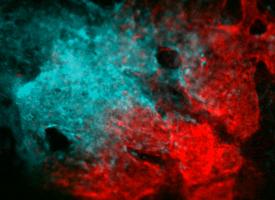 Senior author Wei Hsu, Ph. D., dean’s professor of Biomedical Genetics and a scientist at the Eastman Institute for Oral Health at theUniversity of Rochester Medical Center, said the goal is to better understand and find
Senior author Wei Hsu, Ph. D., dean’s professor of Biomedical Genetics and a scientist at the Eastman Institute for Oral Health at theUniversity of Rochester Medical Center, said the goal is to better understand and find
Hsu believes his findings contribute to an emerging field involving tissue engineering that uses stem cells and other materials to invent superior ways to replace damaged craniofacial bones in humans due to congenital disease, trauma, or cancer surgery.
For years Hsu’s lab, including the study’s lead author, Takamitsu Maruyama, Ph. D., focused on the function of the Axin2 gene and a mutation that causes craniosynostosis in mice. Because of a unique expression pattern of the Axin2 gene in the skull, the lab then began investigating the activity of
The team also confirmed that this population of stem cells is unique to bones of the head, and that separate and distinct stem cells are responsible for formation of long bones in the legs and other parts of the body, for example.
The National Institutes of Health and NYSTEM funded the research.
Source: https://www.urmc.rochester.edu/news/story/4487/scientists-discover-stem-cells-capable-of-repairing-s...

